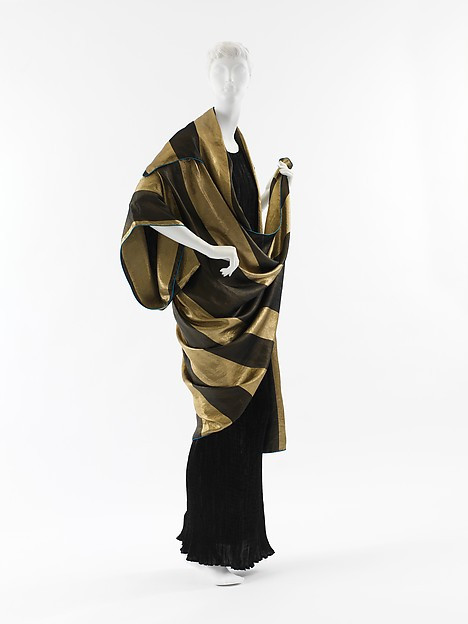Paul Poiret stands as a titan in the history of twentieth-century fashion, often hailed as the “King of Fashion” for his revolutionary impact. More than just a dressmaker, Poiret elevated fashion to an art form, fundamentally changing how women dressed and how the industry operated. While he is often credited with liberating women from the corset and introducing iconic designs like hobble skirts and harem pants, these are merely details within his larger, more profound contribution to fashion history.
Poiret’s genius lay in his direct manipulation of fabric on the body. He pioneered a draping technique that prioritized form and flow over the rigid tailoring and pattern-making of his predecessors. Inspired by antique and global dress traditions, Poiret championed clothing constructed from straight lines and rectangular shapes. This approach established the very foundation of modern fashion, irrevocably altering the course of costume history.
His modernity, however, extends beyond mere structural innovation. Poiret’s vision, though sometimes overshadowed by his decorative flair, was deeply intertwined with the burgeoning modernist movement. His clothing, characterized by structural simplicity, marked a crucial moment in the emergence of modernism itself. Equally significant was his embodiment of the modern woman, perfectly represented by his wife and muse, Denise Poiret.
Denise, slim, youthful, and uncorseted, was the epitome of la garçonne and Poiret’s ultimate inspiration. He designed his radically simplified garments around her slender physique. As he famously declared to Vogue in 1913, “My wife is the inspiration for all my creations; she is the expression of all my ideals.” If Paul Poiret was the prophet of modernism in fashion, Denise was its most compelling embodiment, influencing the “King Fashion” aesthetic he cultivated.
Poiret’s influence permeated every aspect of a woman’s attire, from hats and shoes to accessories like fans and stockings. He conceived and presented these accessories as individual art pieces, underscoring his belief that fashion was indeed art. For instance, the “Le Bal” shoes, crafted by André Perugia for Denise Poiret in 1924, were lavishly embroidered with colored seed beads, depicting Paul and Denise Poiret entering a ball – a spectacle in itself, reflecting the theatricality of “king fashion.”
His hats were equally dramatic and designed to captivate. While his atelier produced a diverse range of millinery styles, including cloches, turbans, and jeweled headbands, Poiret also collaborated with milliners like Madeleine Panizon. Panizon created striking pieces for Denise, such as the “Trocadéro” hat, made from dyed ostrich feathers, evoking exoticism and grandeur.
Denise Poiret’s personal style was instrumental in popularizing these accessories. A 1913 Vogue article highlighted her trendsetting choices, noting, “Mme. Poiret it was who first wore the plain satin slipper in vivid colors without buckle or bow, and the stocking to match the skirt color.” The article further credited Poiret with introducing high, wrinkled morocco boots through Denise, showcasing her integral role in shaping “king fashion” trends.
Poiret’s most groundbreaking achievement, perhaps even underestimated by himself, was the chemise silhouette, introduced around 1910. While other designers also advocated for corset abolition, it was Poiret, with Denise’s fearless spirit, who created gowns that foreshadowed the styles of the following decade. His T-shaped dresses in silk damask completed the liberation of the female form.
Poiret’s vision of modernity extended to fashion’s representation. He recognized the power of fashion illustration, collaborating with avant-garde artists to create deluxe albums that merged visual art with sartorial expression, establishing a unique and stylish brand of modernism within “king fashion.” His collaborations with Paul Iribe and Georges Lepape resulted in albums like Les robes de Paul Poiret and Les choses de Paul Poiret, utilizing the pochoir technique to capture the vibrant colors and abstract qualities of his designs.
These albums inspired influential periodicals like Gazette du bon ton, which featured Poiret’s fashions in modern contexts, further solidifying the mutually reinforcing relationship between Poiret’s “king fashion” and modern artistic representation. Poiret’s early career at the House of Doucet and later at Worth honed his business acumen and artistic vision, setting the stage for his own maison de couture and his reign as the “King of Fashion.”
